DIY Pergola: Imagine a shaded haven in your backyard, a place to relax, dine, or simply enjoy the outdoors. Building your own pergola is a rewarding project that lets you create a custom space tailored to your needs and style. With the right tools and a bit of know-how, you can transform your yard into a stunning oasis, perfect for entertaining, unwinding, or simply soaking up the sun.
This comprehensive guide will walk you through every step of the process, from planning and design to construction and finishing touches. We’ll cover everything from choosing the right materials and tools to ensuring your pergola is built to last. Get ready to unleash your inner builder and create a pergola that will be the envy of your neighborhood.
Introduction to DIY Pergolas
A pergola is a beautiful and functional addition to any outdoor space, providing shade, ambiance, and a touch of elegance. Building a pergola yourself is a rewarding project that allows you to create a customized structure that perfectly complements your home and lifestyle.
Building a pergola yourself offers numerous benefits. You have complete control over the design, materials, and size, ensuring the pergola perfectly fits your needs and preferences. This DIY approach can also save you money compared to hiring a professional.
Types of Pergola Designs
Pergolas come in various styles, each offering unique visual appeal and functionality.
- Classic Pergola: This traditional design features four posts supporting a flat roof made of beams and rafters. The classic pergola is often adorned with climbing plants or vines, creating a lush and inviting atmosphere.
- Modern Pergola: Modern pergolas embrace clean lines, minimalist design, and contemporary materials like steel or aluminum. They often feature geometric shapes and a more open roof structure.
- Attached Pergola: Attached pergolas are integrated into the existing structure of your home, providing a seamless transition between indoor and outdoor spaces. They can be built against a wall or incorporated into a patio or deck.
- Freestanding Pergola: Freestanding pergolas are independent structures, offering flexibility in placement and allowing you to create a separate outdoor living area. They are ideal for gardens, patios, or pool areas.
Materials for Pergola Construction
The choice of materials for your pergola is crucial, influencing its aesthetics, durability, and cost. Popular options include:
- Wood: Wood is a classic and versatile material for pergolas, offering warmth, natural beauty, and a wide range of styles. Common choices include cedar, redwood, and pressure-treated lumber.
- Metal: Metal pergolas offer durability, low maintenance, and modern aesthetics. Aluminum and steel are popular choices, known for their strength and resistance to corrosion.
- Vinyl: Vinyl pergolas provide a low-maintenance option, mimicking the look of wood while offering resistance to moisture, insects, and fading.
Planning and Design
Planning and designing your pergola is crucial for a successful project. It involves careful consideration of various factors, such as size, location, and building codes, to ensure a structurally sound and aesthetically pleasing structure.
Determining Optimal Size and Location
The size and location of your pergola should be carefully considered to ensure it complements your existing outdoor space and meets your needs.
- Consider the purpose of your pergola. Will it be used for dining, lounging, or simply providing shade? The size should accommodate the intended use.
- Measure the available space. Take accurate measurements of the area where you plan to build the pergola. Ensure sufficient clearance from surrounding structures and walkways.
- Assess sunlight exposure. Determine the amount of sunlight the chosen location receives throughout the day. This will help you decide on the pergola’s orientation and the type of shade you need.
- Consider the view. If you have a beautiful view, position the pergola to maximize its visibility.
Creating a Detailed Pergola Plan
A detailed pergola plan is essential for a successful build. It Artikels the dimensions, materials, and construction details.
- Sketch a basic layout. Draw a rough sketch of the pergola, including its dimensions, shape, and location.
- Determine the materials. Choose the materials for the posts, beams, rafters, and roof. Consider factors like durability, cost, and aesthetics.
- Specify the construction details. Include details such as the spacing of the posts, beams, and rafters, as well as the type of fasteners to be used.
- Create a materials list. Prepare a detailed list of all the materials needed for the project, including quantities and sizes.
Considering Local Building Codes and Regulations
It is crucial to understand and comply with local building codes and regulations to ensure the safety and stability of your pergola.
- Check with your local building department. Contact your local building department to inquire about specific requirements for pergola construction in your area.
- Obtain necessary permits. Depending on the size and complexity of your pergola, you may need to obtain permits from your local building department.
- Follow code requirements for foundation and supports. Ensure the pergola’s foundation and supports meet the minimum requirements for load-bearing capacity and stability.
- Consider wind and snow loads. In areas with high wind or snow loads, the pergola’s construction should be designed to withstand these forces.
Materials and Tools
The right materials and tools are essential for building a sturdy and beautiful pergola. This section will provide a comprehensive list of materials, followed by a detailed description of the tools required for each step of the process. We’ll also explore the pros and cons of different materials to help you make informed decisions.
Materials
The materials you choose will determine the overall look, durability, and cost of your pergola. Here’s a list of common materials used for pergola construction:
- Wood: Wood is a popular choice for pergolas due to its natural beauty, versatility, and affordability. Common wood options include cedar, redwood, pressure-treated pine, and Douglas fir.
- Metal: Metal pergolas offer durability and low maintenance. Aluminum, steel, and wrought iron are popular choices.
- Vinyl: Vinyl pergolas are known for their low maintenance and weather resistance. They come in a variety of colors and styles.
- Concrete: Concrete pergolas are very durable and can be customized to suit your design preferences. However, they are more expensive and require specialized construction skills.
Tools
The tools you need will depend on the materials you choose and the complexity of your design. Here’s a list of essential tools for pergola construction:
- Measuring tape: Accurate measurements are crucial for a well-built pergola.
- Level: A level ensures that your pergola is built straight and stable.
- Circular saw: A circular saw is used to cut lumber to size.
- Drill: A drill is needed for drilling holes for fasteners and attaching components.
- Hammer: A hammer is used for driving nails and securing components.
- Screwdriver: A screwdriver is used for driving screws and attaching components.
- Safety glasses: Protect your eyes from flying debris.
- Work gloves: Protect your hands from splinters and injuries.
Material Comparison
The following table Artikels the pros and cons of different pergola materials:
| Material | Pros | Cons |
|---|---|---|
| Wood | Natural beauty, versatility, affordability | Requires regular maintenance, susceptible to rot and insect damage |
| Metal | Durable, low maintenance | Can be expensive, may rust or corrode |
| Vinyl | Low maintenance, weather-resistant | Can be less durable than wood or metal, may fade in sunlight |
| Concrete | Very durable, customizable | Expensive, requires specialized construction skills |
Foundation and Support
A strong foundation is crucial for a pergola, ensuring its stability and longevity. It acts as the base for the structure, transferring the weight of the pergola to the ground. This section will guide you through various foundation options and provide detailed steps for building a sturdy base.
Foundation Options
The choice of foundation depends on the size and weight of the pergola, soil conditions, and local building codes. Here are common foundation options:
- Concrete Footings: Concrete footings provide a robust and durable foundation, suitable for heavy pergolas. They are poured directly into the ground, ensuring a stable base. The size and depth of the footings are determined by the weight of the pergola and soil conditions.
- Concrete Piers: Concrete piers are vertical columns of concrete that support the pergola. They are ideal for areas with unstable soil or where the pergola needs to be elevated. The piers are usually reinforced with rebar and can be built to different heights to accommodate uneven ground levels.
- Metal Posts: Metal posts are a more affordable and easier-to-install option compared to concrete. They are available in various sizes and can be easily adjusted to accommodate different pergola heights. However, they may not be as durable as concrete piers, especially in areas with extreme weather conditions.
- Pressure-Treated Wood Posts: Pressure-treated wood posts are a natural and readily available option. They are resistant to rot and decay, making them suitable for outdoor use. However, they require regular maintenance and may not be as strong as concrete or metal posts.
Preparing the Foundation
Before constructing the foundation, it’s essential to prepare the site properly. This involves:
- Marking the Pergola Location: Use stakes and string to mark the exact location of the pergola. Ensure the area is level and free from any obstacles.
- Excavating the Site: Dig holes for the foundation, according to the chosen method and local building codes. The depth and size of the holes should accommodate the footings, piers, or posts.
- Installing Gravel or Crushed Stone: Fill the excavated holes with a layer of gravel or crushed stone for drainage and stability. This layer should be compacted to create a solid base for the foundation.
- Setting the Posts or Footings: Once the gravel layer is in place, set the posts or footings in the holes. Ensure they are level and plumb using a level and plumb bob.
Installing Support Posts and Beams
Once the foundation is in place, install the support posts and beams. This process involves:
- Attaching the Posts: Secure the posts to the foundation using concrete, anchors, or bolts, depending on the chosen foundation type. Ensure the posts are securely attached and level.
- Installing the Beams: Place the beams on top of the posts and secure them using brackets or joist hangers. Ensure the beams are level and aligned.
- Adding Crossbeams: If the pergola has a large span, add crossbeams to provide additional support. These beams are typically placed between the main beams and help distribute the weight of the roof.
It’s crucial to follow local building codes and consult with a structural engineer for complex pergola designs.
Framing and Roof Construction
The pergola’s frame and roof are the heart of the structure, providing both aesthetic appeal and weather protection. Carefully constructing these elements ensures a strong and durable pergola that will stand the test of time.
Framing the Pergola
The pergola’s frame provides the foundation for the roof and determines the overall shape and size of the structure.
- Determine the size and shape of the pergola. Measure the area where the pergola will be built and decide on the desired dimensions and shape. This will determine the length, width, and height of the frame.
- Cut the framing lumber to size. Using a saw, cut the lumber for the posts, beams, and rafters to the required lengths. Ensure that all cuts are precise for a clean and stable structure.
- Assemble the posts and beams. Join the posts and beams together using strong wood screws or lag bolts. The posts should be securely anchored to the foundation, and the beams should be level and aligned with the posts.
- Install the rafters. The rafters connect the beams and provide support for the roof. Cut the rafters to the appropriate length and angle, ensuring that they are evenly spaced and attached to the beams using screws or nails.
- Create a strong and stable roof frame. Ensure the frame is securely fastened at all joints, and the rafters are adequately supported by the beams. This will provide a robust foundation for the roof covering.
Roof Construction
The roof of the pergola provides shade and protection from the elements. Choosing the right roofing material depends on the desired aesthetic and functionality of the pergola.
- Lattice Roof. A lattice roof offers a classic and airy look, allowing light and air to filter through. It is typically constructed using pre-made lattice panels or by creating a custom lattice design using strips of wood.
- Solid Panel Roof. Solid panels provide more shade and privacy, and they can be made from various materials, such as wood, metal, or plastic. Solid panels are generally more durable and weather-resistant than lattice.
- Fabric Roof. A fabric roof is a lightweight and versatile option, allowing for a range of colors and patterns. Fabric roofs can be retractable, providing shade when needed and allowing sunlight to penetrate when desired.
Finishing Touches: Diy Pergola
Your pergola’s structure is complete, but it’s time to add those finishing touches that transform it into a truly inviting and personalized space. This final stage is where you can unleash your creativity and create a pergola that reflects your style and enhances your outdoor living experience.
Decorative Elements
Adding decorative elements can elevate your pergola from a simple structure to a stunning focal point in your outdoor space. Here are some ideas to consider:
- Latticework: Latticework panels can be incorporated into the pergola’s design to create a sense of privacy and visual interest. You can choose from various patterns and materials, including wood, vinyl, or metal, to match your pergola’s style. A latticework panel can be strategically placed to partially enclose a seating area, creating a cozy and intimate space.
- Lighting: Lighting plays a crucial role in setting the mood and extending the usability of your pergola into the evening hours. Consider incorporating string lights, lanterns, or even integrated LED lighting for a modern touch. String lights draped across the pergola’s beams can create a magical ambiance, while lanterns placed on the table or hung from the roof can add a touch of rustic charm.
- Plants: Vines, flowers, and other plants can add a touch of nature and vibrant color to your pergola. Climbing vines like wisteria or clematis can be trained to grow up the posts and across the beams, creating a lush and inviting canopy. Trailing plants like petunias or geraniums can be hung in baskets from the pergola’s roof, adding a cascade of color.
Staining or Painting, Diy pergola
The finish you choose for your pergola will significantly impact its overall look and longevity. Here are some tips to consider when staining or painting your pergola:
- Choosing the Right Finish: The type of finish you choose will depend on your desired look and the level of protection you need. Staining is a good option for preserving the natural beauty of the wood while providing some protection. Painting offers a wider range of colors and can provide a more durable finish.
- Preparation is Key: Before applying any finish, it’s essential to properly prepare the wood. This involves sanding the surface to create a smooth finish and cleaning it to remove dirt, dust, and debris.
- Applying the Finish: Apply the stain or paint in thin, even coats, following the manufacturer’s instructions. Allow each coat to dry completely before applying the next.
Sealing and Protection
Sealing and protecting your pergola is crucial for extending its lifespan and preserving its beauty. Here are some methods to consider:
- Water-Repellent Sealant: A water-repellent sealant will help protect the wood from moisture damage, rot, and mildew. Apply the sealant according to the manufacturer’s instructions, ensuring to cover all surfaces.
- UV Protection: UV rays from the sun can cause the wood to fade and crack over time. Using a sealant with UV protection can help protect the wood from these damaging effects.
Safety Considerations
Building a pergola involves working with tools and materials that can be dangerous if not handled properly. It’s crucial to prioritize safety throughout the construction process to prevent injuries and ensure a successful project.
Safe Tool and Equipment Usage
Using tools and equipment correctly and safely is paramount.
- Always wear appropriate safety gear, including safety glasses, gloves, and hearing protection.
- Inspect tools for damage before use and replace or repair any faulty equipment.
- Use ladders and scaffolding securely and follow manufacturer instructions.
- Avoid using power tools in wet conditions and ensure proper grounding.
- Never operate machinery without proper training and always follow manufacturer instructions.
Following Building Codes and Regulations
Adhering to local building codes and regulations is essential for a safe and structurally sound pergola.
- Check with your local building department for specific requirements regarding permits, foundation types, and structural design.
- Ensure the pergola’s size, height, and location comply with zoning regulations and setbacks.
- Use materials that meet building code standards for strength and durability.
- Hire a qualified professional for complex projects or if unsure about code requirements.
Potential Safety Hazards
Understanding potential safety hazards helps you take precautions and minimize risks.
- Falling objects: Always wear a hard hat when working above ground level and secure materials properly to prevent them from falling.
- Power tool hazards: Use power tools with caution and follow manufacturer instructions. Disconnect tools when not in use and be aware of cords and power lines.
- Fire hazards: Avoid using power tools near flammable materials and keep a fire extinguisher readily available.
- Electrical hazards: Be aware of overhead power lines and avoid contact. Use GFCI outlets for outdoor electrical work.
- Chemical hazards: Wear appropriate protective gear when working with chemicals and follow product instructions carefully.
Maintenance and Care
A pergola, like any outdoor structure, requires regular maintenance to ensure its longevity and beauty. Neglecting maintenance can lead to deterioration, structural instability, and even safety hazards.
A well-maintained pergola will not only look its best but also provide years of enjoyment. It is essential to establish a routine maintenance schedule and address any issues promptly to prevent them from escalating.
Building a DIY pergola can be a rewarding project, but it’s important to consider the materials you’re working with. If you’re looking for a low-maintenance option that’s both durable and stylish, an aluminum pergola might be the perfect choice. Aluminum is weather-resistant and requires minimal upkeep, allowing you to spend more time enjoying your outdoor space and less time on maintenance.
Cleaning and Stain Application
Regular cleaning is crucial for maintaining the appearance and protecting the materials of your pergola.
Dirt, dust, pollen, and other debris can accumulate over time, leading to discoloration and damage. Staining and sealing can help protect the wood from weathering and UV damage, enhancing its durability and aesthetic appeal.
- Regular Cleaning: Sweep or brush away loose debris regularly. Use a mild detergent and water solution to clean the pergola, avoiding harsh chemicals that can damage the wood.
- Stain Application: Apply a wood stain or sealant every 1-2 years, depending on the type of wood and climate. Choose a stain that provides UV protection and water resistance.
Inspecting and Repairing
Regular inspections can help identify potential issues before they become major problems.
Pay attention to signs of rot, insect infestation, loose fasteners, and damaged components. Addressing these issues promptly can prevent further damage and ensure the structural integrity of your pergola.
DIY pergolas offer a great way to personalize your outdoor space, but sometimes you need the strength and longevity of a more durable material. If you’re looking for a low-maintenance option that can withstand the elements, a metal pergola might be the perfect choice.
While they may require professional installation, metal pergolas can be just as stylish and functional as their wooden counterparts, offering years of shade and enjoyment.
- Inspect for Rot and Insect Damage: Check for soft spots, discoloration, or signs of insect activity. Replace any damaged wood immediately.
- Tighten Loose Fasteners: Periodically tighten screws, bolts, and other fasteners to ensure structural stability.
- Repair Damaged Components: Address any cracks, splits, or broken parts promptly to prevent further damage.
Preventing Issues
Proactive measures can help prevent common pergola problems.
Proper drainage, regular cleaning, and pest control can minimize the risk of rot, insect infestation, and other issues. These preventative steps can significantly extend the lifespan of your pergola.
- Ensure Proper Drainage: Ensure that water drains away from the pergola to prevent water damage and rot.
- Regular Cleaning: Keep the pergola clean to discourage insect infestation and prevent the buildup of debris.
- Pest Control: Use appropriate pest control measures to prevent insect damage, particularly termites and carpenter ants.
Inspiration and Ideas
Pergolas offer a fantastic opportunity to transform your outdoor space into a captivating and functional haven. Beyond their practical benefits, pergolas serve as a canvas for your creativity, allowing you to personalize your design and create a unique and inviting ambiance.
Pergola Designs and Styles
The beauty of pergolas lies in their diverse design possibilities. From classic to contemporary, there’s a style to complement any architectural aesthetic and outdoor living preference.
- Classic Pergolas: These timeless designs feature sturdy wooden beams arranged in a rectangular or square shape, often with latticework panels for added visual interest. They are perfect for traditional homes and gardens, offering a sense of elegance and sophistication.
- Modern Pergolas: Modern pergolas embrace clean lines, minimalist aesthetics, and innovative materials like metal or composite wood. They often feature geometric shapes, cantilevered beams, and sleek, contemporary finishes.
- Rustic Pergolas: Rustic pergolas evoke a sense of warmth and natural charm. They are typically constructed from rough-hewn timbers, often with exposed beams and natural finishes. They pair beautifully with natural stone patios, wood decking, and lush landscaping.
- Mediterranean Pergolas: Inspired by the architecture of the Mediterranean region, these pergolas feature arched openings, intricate details, and a focus on natural materials like stone and wood. They often incorporate vines or climbing plants to create a sense of privacy and tranquility.
Unique Pergola Features
Beyond their basic structure, pergolas can be enhanced with unique features that add functionality and visual appeal.
- Retractable Roof: A retractable roof provides shade on sunny days and opens up to the sky when desired, allowing you to enjoy the starry night sky or a refreshing breeze. This feature adds versatility and comfort to your outdoor space.
- Built-in Seating: Incorporating seating into the pergola design creates a comfortable and inviting gathering space. This could include benches, chairs, or even a built-in sofa.
- Fire Pit: A fire pit nestled beneath the pergola creates a warm and inviting ambiance, perfect for evenings spent with family and friends. This feature is especially appealing in cooler climates.
- Lighting: Adding lighting to your pergola extends its usability into the evening hours. Consider string lights, pendant lights, or even solar-powered lights for a warm and inviting glow.
- Water Features: A small fountain or water feature can add a calming and serene element to your pergola. The sound of running water can create a relaxing atmosphere and enhance the overall ambiance.
Pergola Versatility
Pergolas are incredibly versatile structures that can enhance various outdoor living spaces.
- Patios and Decks: Pergolas provide shade and shelter for patios and decks, transforming them into inviting outdoor living rooms. They can be used for dining, relaxing, or entertaining guests.
- Gardens: Pergolas can create focal points in gardens, providing shade for plants and a beautiful backdrop for flowers and foliage. They can also be used to define different areas within the garden.
- Pools and Spas: Pergolas provide shade and privacy for pool and spa areas, creating a tranquil and relaxing oasis. They can also be used to house outdoor showers or changing rooms.
- Entryways: Pergolas can create a welcoming entrance to your home, adding a touch of architectural interest and providing shade for guests. They can also be used to define a separate entryway for a guest house or studio.
Ending Remarks
Building a DIY pergola is a journey that combines creativity, skill, and a touch of personal expression. From the initial planning stages to the final finishing touches, every step allows you to personalize your outdoor space. As you work on your pergola, remember that the process is just as important as the end result. Enjoy the satisfaction of creating something beautiful and functional with your own hands, and embrace the opportunity to enhance your outdoor living experience. So, grab your tools, gather your materials, and let’s embark on this exciting DIY adventure together!
Helpful Answers
What are the most popular pergola designs?
Pergolas come in various designs, including classic rectangular, elegant arched, and modern minimalist styles. The best design depends on your personal preference and the overall aesthetic of your backyard.
How long does it take to build a pergola?
The construction time for a pergola can vary depending on the size, complexity, and your experience level. A basic pergola can be built within a weekend, while more elaborate designs may take several days or weeks.
How do I ensure my pergola is structurally sound?
Using high-quality materials, following proper construction techniques, and consulting local building codes are essential for ensuring structural integrity. It’s also advisable to seek professional advice if you have any doubts about the structural soundness of your pergola.
Can I build a pergola on a concrete patio?
Yes, you can build a pergola on a concrete patio. You’ll need to use anchors or bolts to secure the posts to the concrete surface. Consult local building codes for specific requirements.
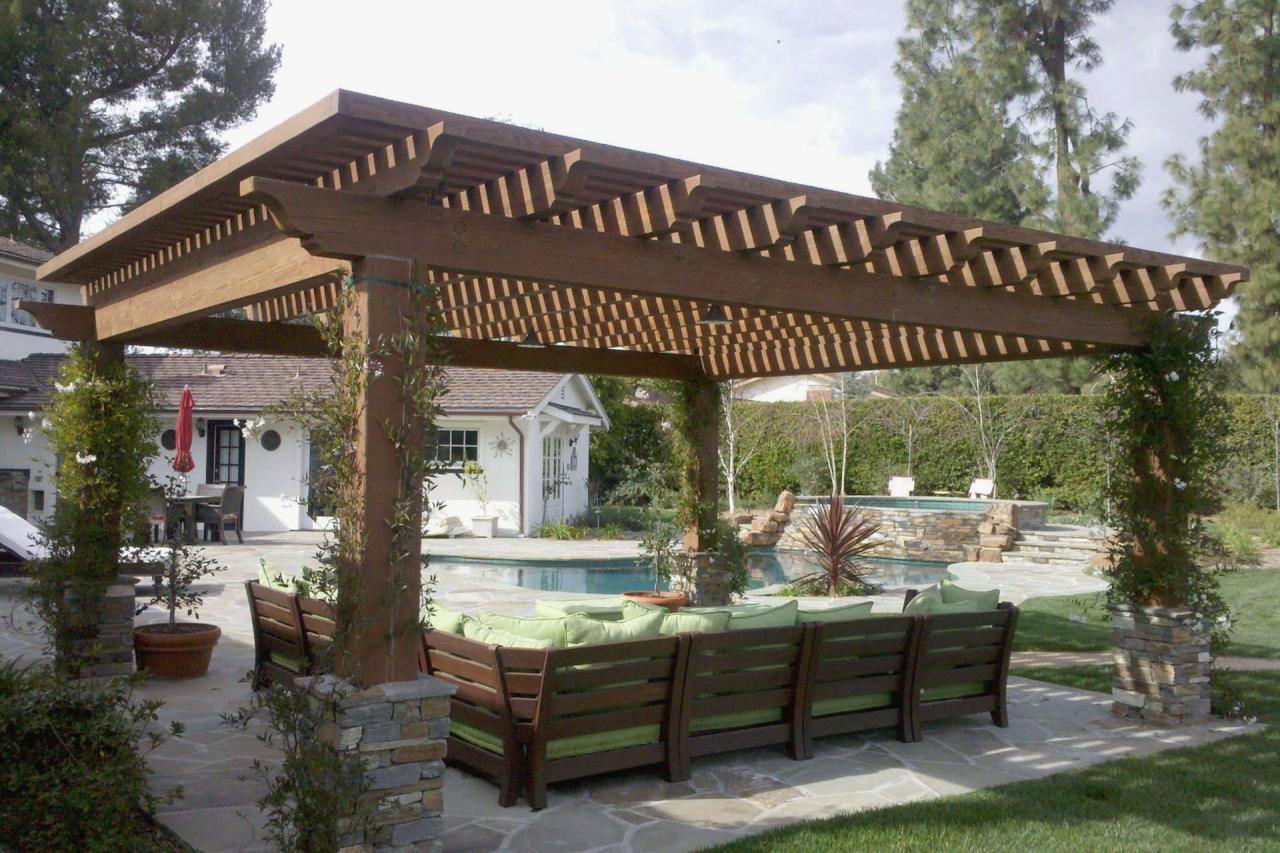
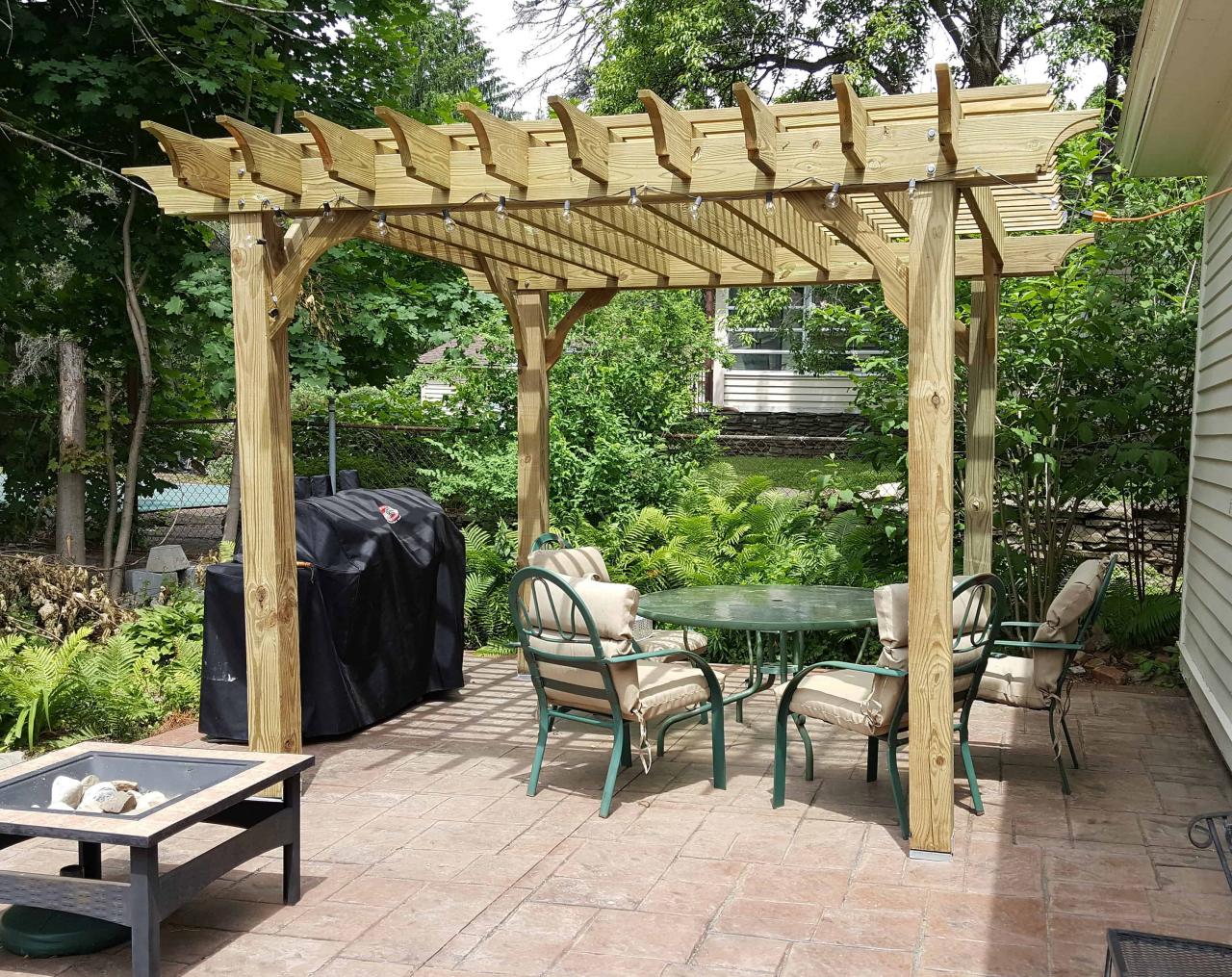
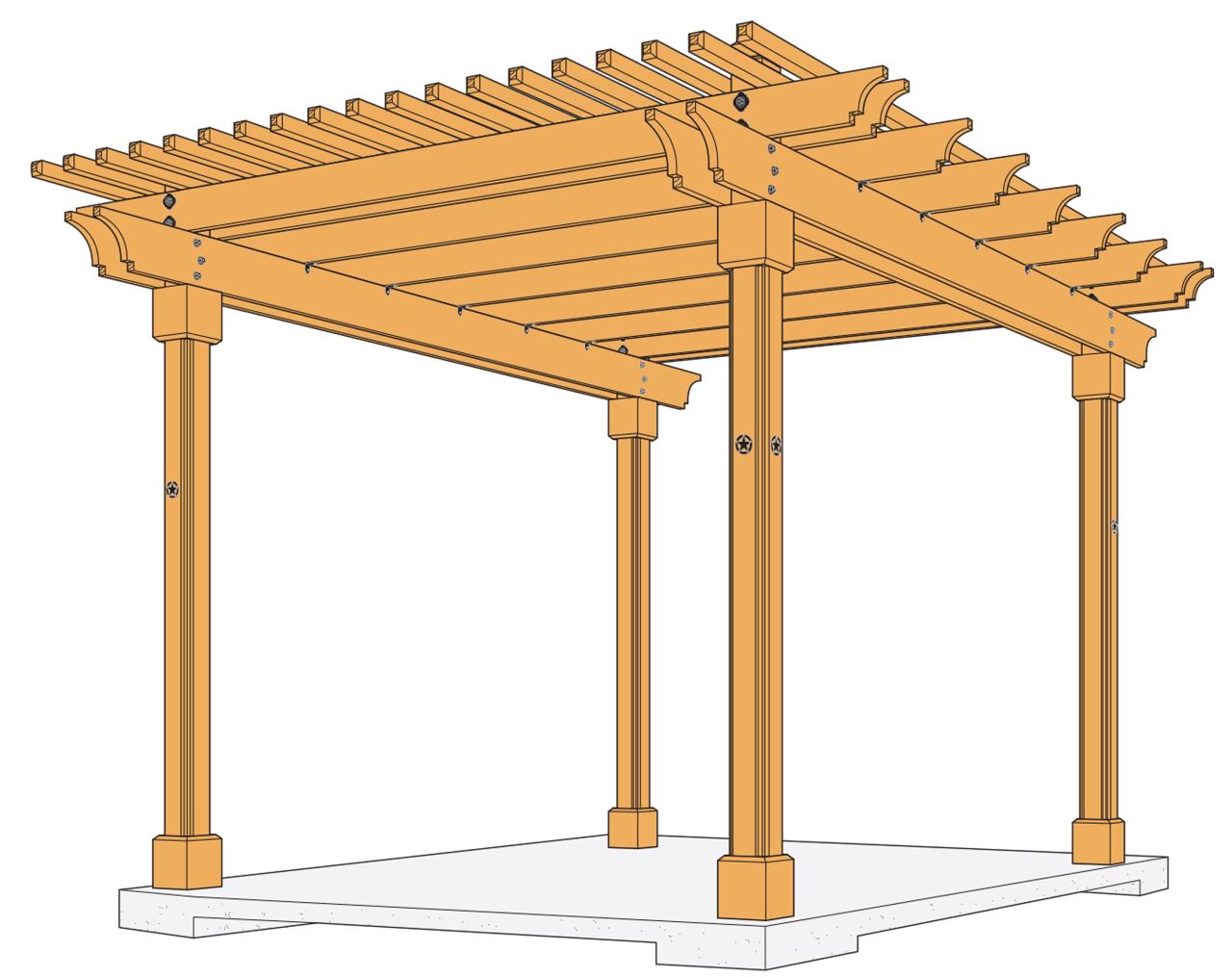
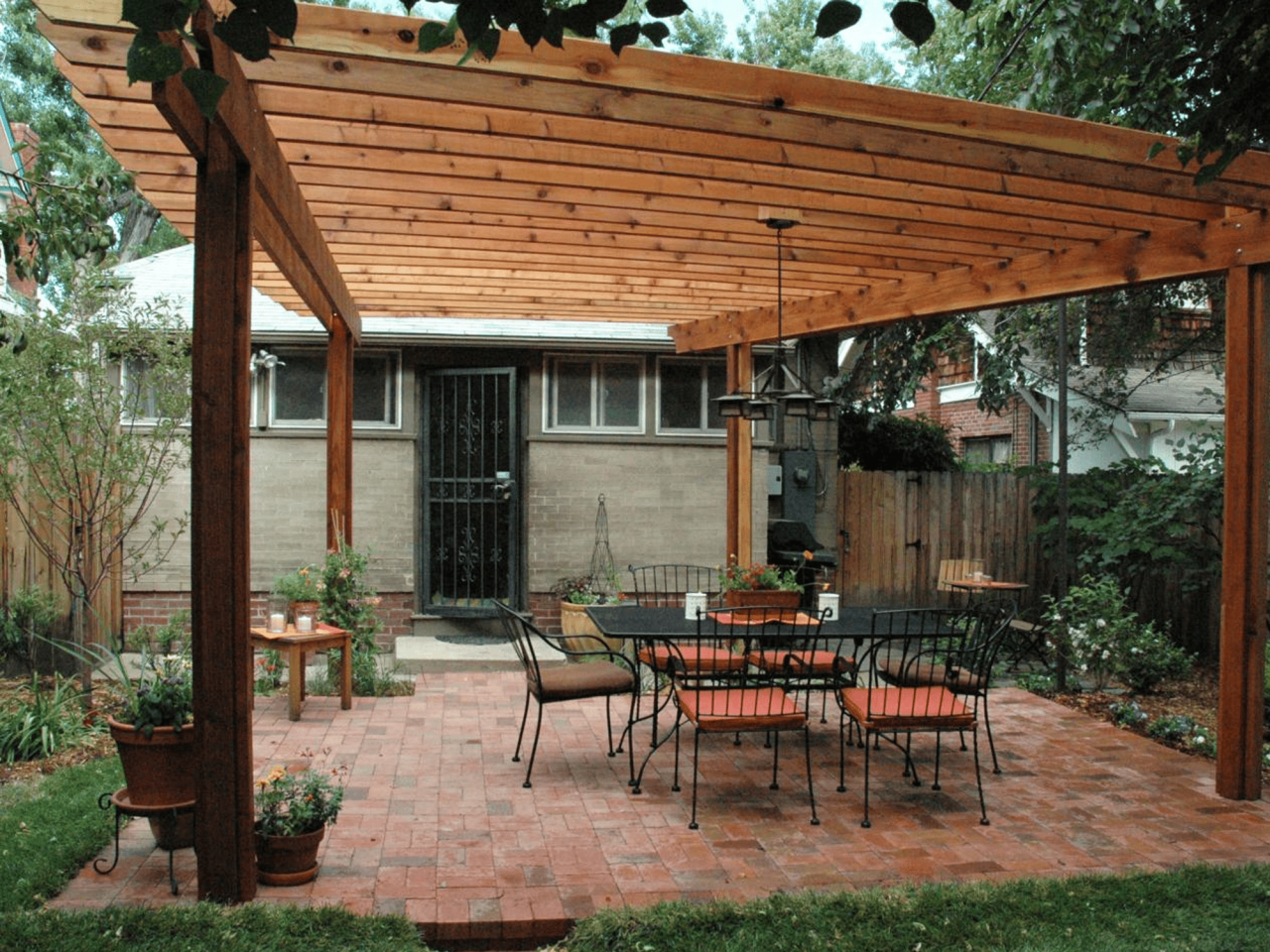
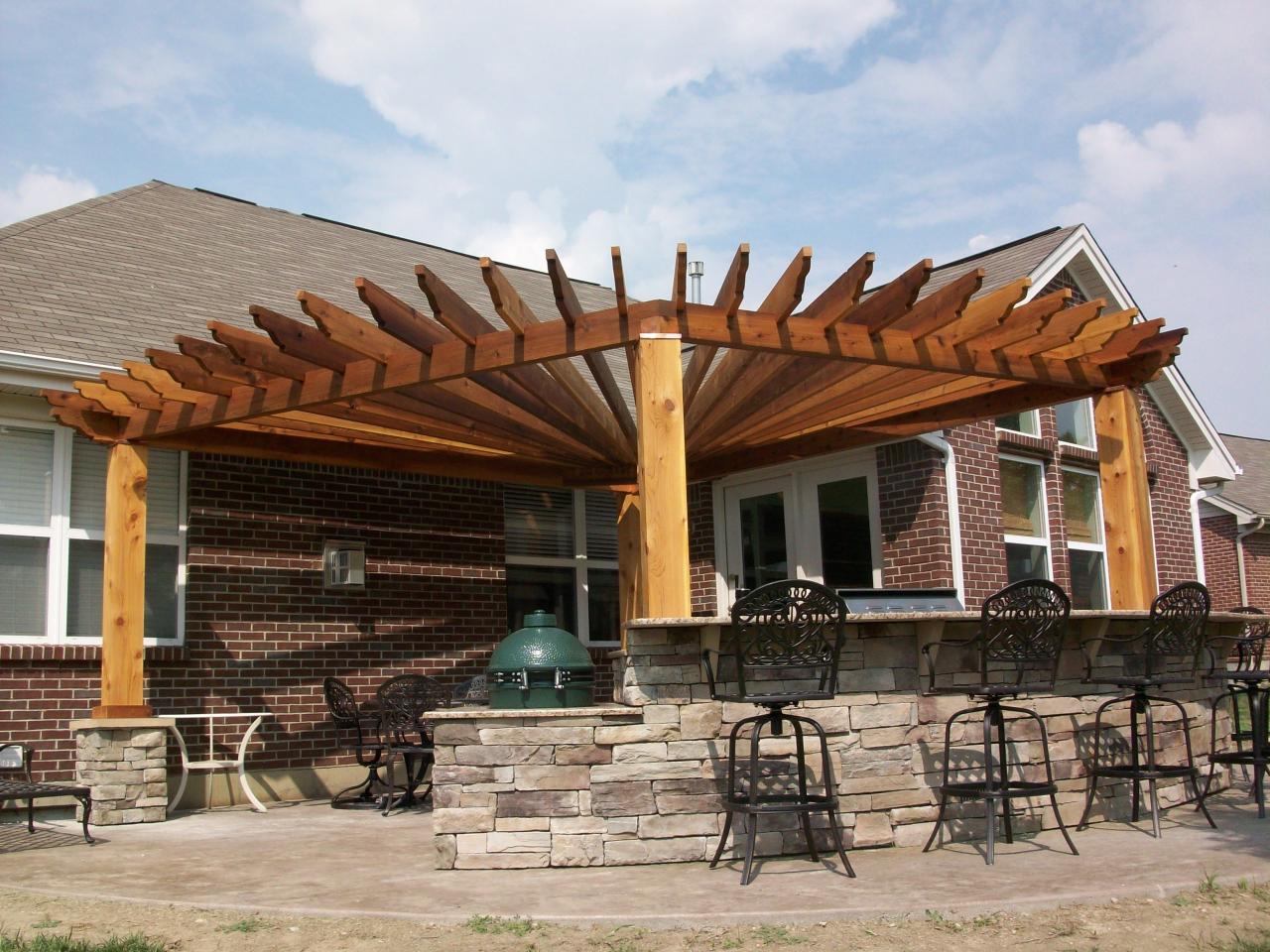

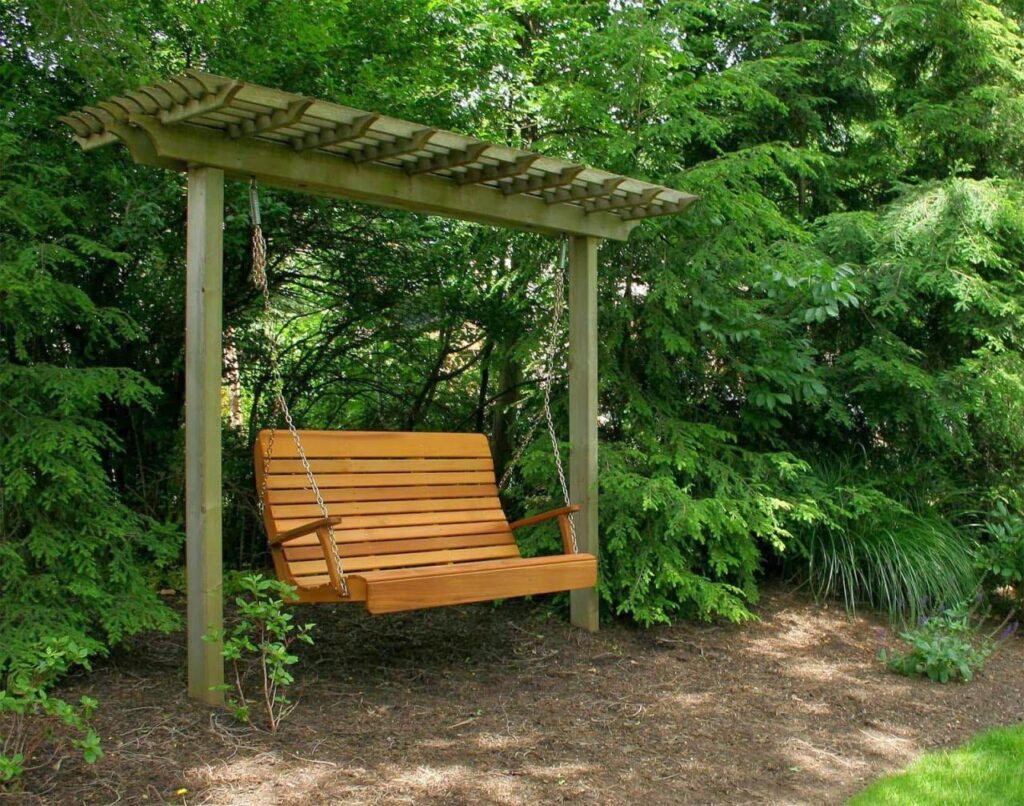

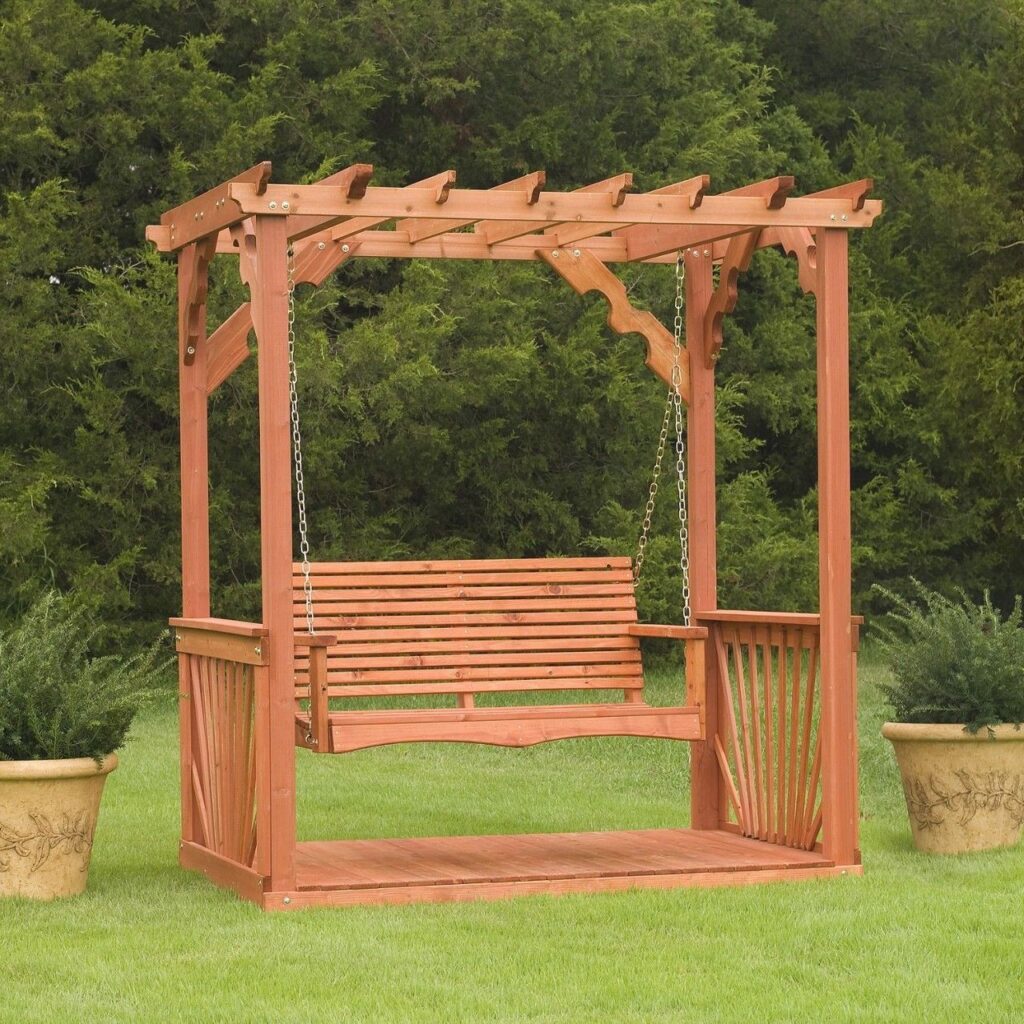

2 thoughts on “DIY Pergola: Build Your Dream Outdoor Oasis”